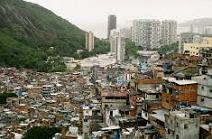 Inequality is linked to the absence of equality : when two or more elements are different, they are unequal. Social , for its part, is that related to society (the community of individuals who live together under certain norms and who have common interests).
Inequality is linked to the absence of equality : when two or more elements are different, they are unequal. Social , for its part, is that related to society (the community of individuals who live together under certain norms and who have common interests).
The idea of social inequality , in this framework, refers to what happens when different groups experience dissimilar situations . The concept is usually associated with economic differences , which in turn are reflected in multiple issues.
When there is social inequality, people do not have the same possibilities of access to resources (which are finite ). This represents unequal treatment and, therefore, discrimination . Inequality means that the possibilities of progress of a sector of the population are affected.
Suppose that research reveals that only 30% of individuals born in rural towns with less than 5,000 inhabitants manage to complete secondary school, while the percentage of subjects with completed secondary education at the national level reaches 85% . At the same time, it is known that those who do not have a secondary degree are unable to obtain well-paid jobs. These situations lead to marked social inequality between the inhabitants of the smallest rural towns and those who live in the rest of the country.
The most violent societies usually have significant social inequality: opportunities for progress and resources are in the hands of a minority, while the majority of people are forced to subsist as best they can. Violent confrontations, in this context, are frequent.
Needless to say, social inequality is a problem that affects all countries, although its impact may be different in each one. This leads us to the search for solutions, something that in some cases is addressed individually, that is, at the national level, while in others it is an effort undertaken by groups of countries.
The fundamental question that arises in principle is "can something be done to fight social inequality?" ; If so, “what can be done?” . Let's see below some of the tactics that can be used to solve this problem on a global level:
 * cooperation and development : cooperation and development projects are ideal for reducing social inequality. Its design and implementation remains in the hands of the most developed countries, which have the necessary resources to get involved in these initiatives and help the less fortunate through contributions and donations, among other ways to compensate for their shortcomings to allow them to make their way. ;
* cooperation and development : cooperation and development projects are ideal for reducing social inequality. Its design and implementation remains in the hands of the most developed countries, which have the necessary resources to get involved in these initiatives and help the less fortunate through contributions and donations, among other ways to compensate for their shortcomings to allow them to make their way. ;
* protection of civilians : one of the most common causes of forced migration is war . Once again, the most developed countries have the possibility of collaborating with those affected, either by providing shelter, helping them move, or providing medical and psychological assistance. In the midst of an emergency situation, it is essential that governments guarantee the protection of the people;
* fair tax systems : the creation of a fair tax system would give rise to a reality in which each individual contributed based on their assets. As reality is far from this balance , people evade their fiscal responsibilities and this leads to a lack of resources on the part of governments to invest in the most important areas. In short, any form of corruption should be fought to achieve a world without social inequality;
* access to fundamental public resources : it is important to highlight that the economy is not the only level in which social inequality is observed, but rather it begins with the lack of access to basic services, something that millions of people suffer unfairly. . When a power appropriates certain natural resources , a large portion of society cannot lead a decent life.
